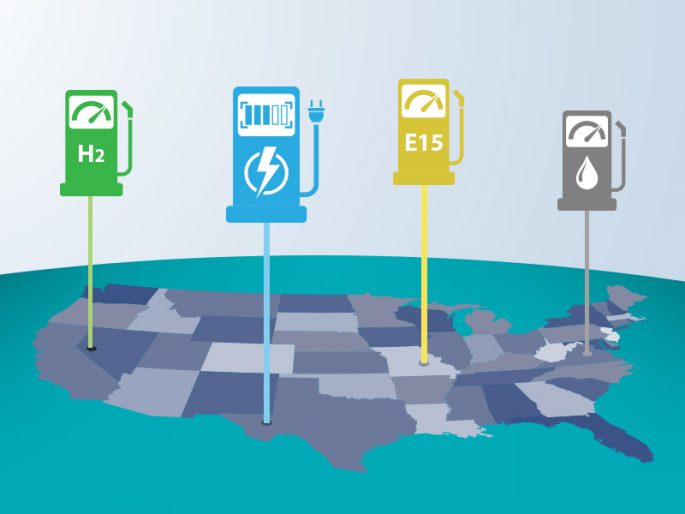In our previous SourceLine, we discussed how demographics and consumer preferences will impact fuel sales. In this installment, we look at the role alternative fuels will play on the forecourt of the future.
Diverse Fueling Landscape Take Shape
Despite reports that other countries and automakers are moving away from gasoline and diesel, a positive outlook for traditional fuels remains. For example, Volvo announced it will stop developing new diesel engine technologies to pursue electric vehicles. That notwithstanding, automakers will still produce traditional combustion engines as development of new combustion engine technologies diminish.
With that in mind, a diverse fueling landscape is already taking root. Some states are differentiating themselves by advancing infrastructure for certain alternative fuels. California, for example, leads both EV charging stations and hydrogen stations. Another fuel, E15, is being distributed more widely, and E85 has a foothold in the Midwest.
Planning for Alternative Fueling is Essential
A sprawling new station concept from Shell includes charging outlets, hydrogen fueling points as well as traditional fuels. The site also hosts a restaurant, deli, a lube area and a place where online shoppers collect purchases. As this concept illustrates, expansion of alternative fuels amid other strategic initiatives quickly becomes an issue of land use. Flexible site design will be critical.
The sale of alternative fuel represents a growth opportunity for C-stores. Alternative fuels attract new customers who can drive new sales to the C-store. Contact the Source SOLUTIONS Design Group to consult with a design expert today to begin preparing your site for the future of fueling.
For more information on this topic, watch Fuel Marketer News for Source’s next Fueled for Thought column.




